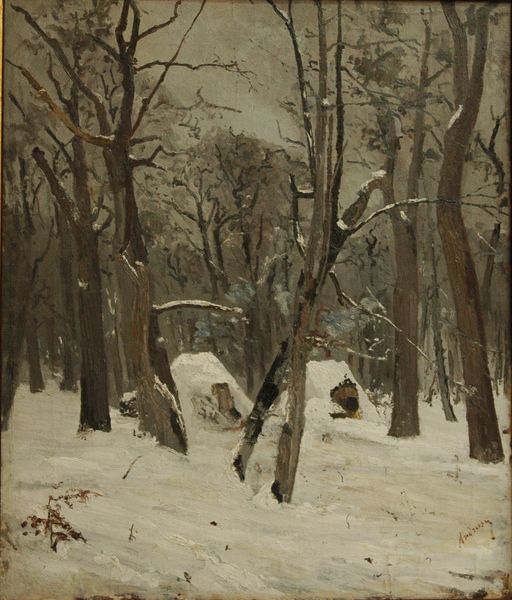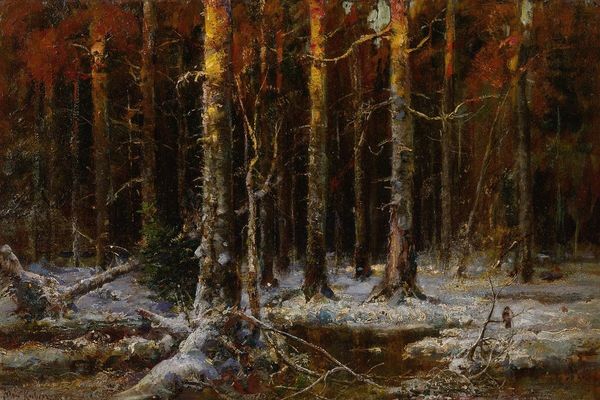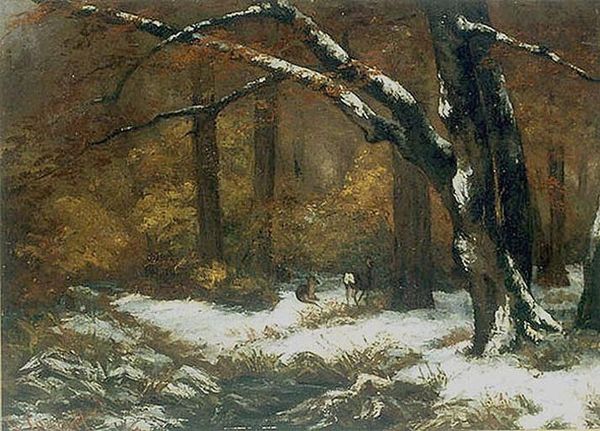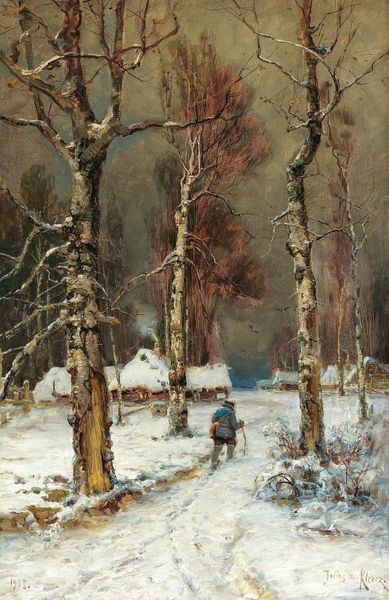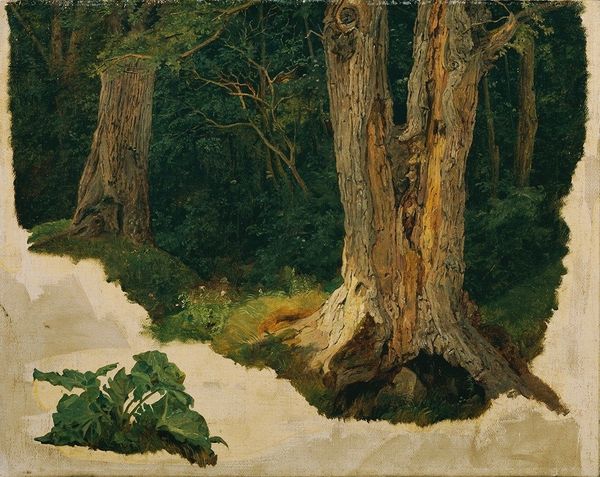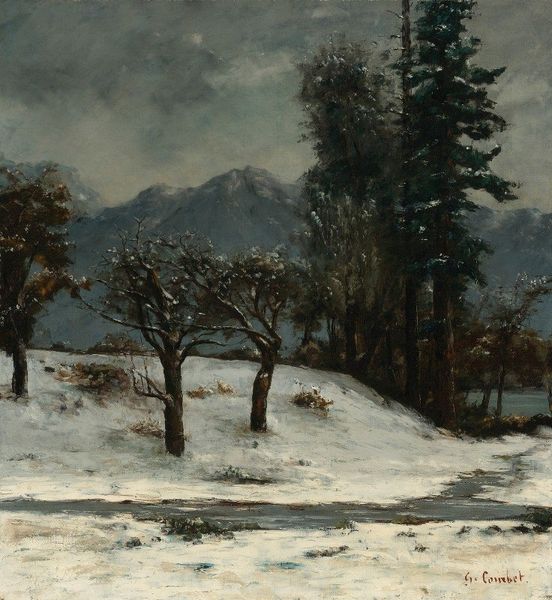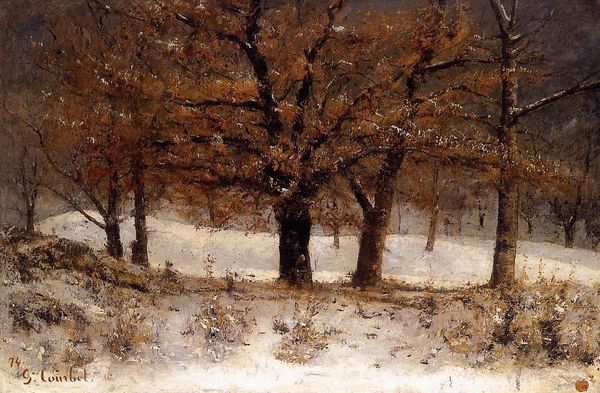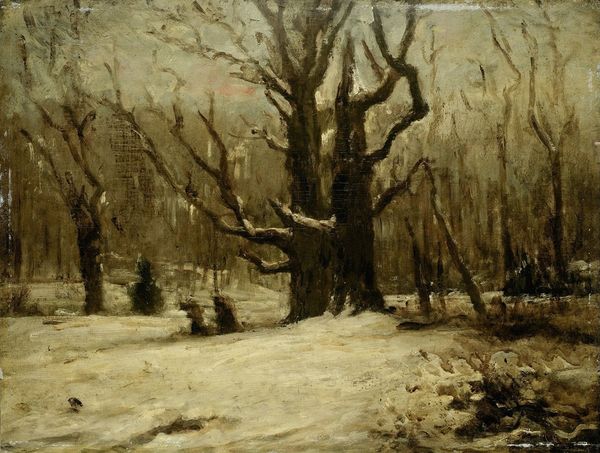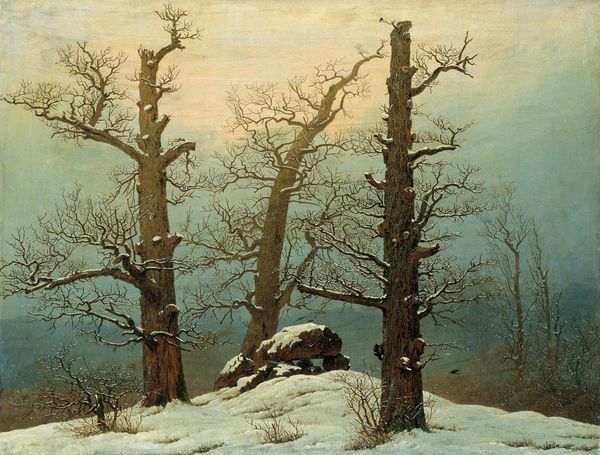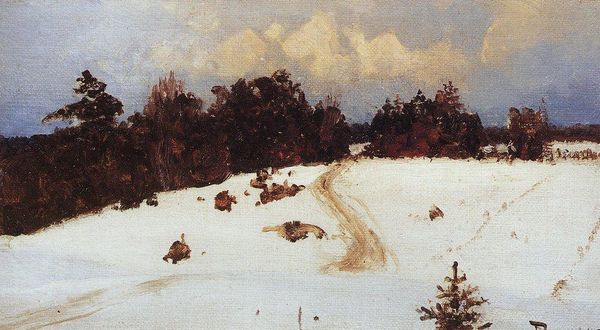
painting, oil-paint
#
painting
#
oil-paint
#
landscape
#
charcoal drawing
#
figuration
#
oil painting
#
realism
Copyright: Public Domain: Artvee
Curator: Here, we have Gustave Courbet’s “The Deer,” painted circa 1865. It’s an oil on canvas. What’s your immediate reaction? Editor: Gloomy. It’s mostly browns and whites, the landscape feels harsh and unwelcoming. I imagine the oil paint is thickly applied. Curator: Courbet's realism often reflected the tough realities of life, and that extends beyond human subjects. Look at how this artwork engages with 19th-century ideas of landscape. Were wild spaces truly ‘untamed’ and free from social forces? Think of land ownership, resource extraction, the pressures of urbanization… Editor: Absolutely, we should consider the lumber industry's impact. Courbet often included the labor and its brutal effects. Is he pointing to the vulnerability of the natural world to human interference, particularly within the system of burgeoning capitalism? The timber felled, the wildlife displaced...the economic drivers here are really important. Curator: Exactly. These weren’t merely picturesque scenes, but often politically charged statements, engaging with questions of social justice, gender roles, and even national identity. It's a landscape painted during a period of massive social and political upheaval in France. This informs our reading of those sheltering deer. Are they figures of resilience? Or vulnerable emblems of a vanishing world? Editor: We also need to consider how the paint itself is manipulated to create different textures, mimicking bark, snow, and fur. The physicality of the paint and the social realities can't be separated here. Curator: It's a dance between the act of painting and the statement the artist is trying to make. Thanks for bringing out that layered point. Editor: It makes me wonder, who were Courbet's suppliers, and who labored to extract those pigments? Even that information might lend us more context in interpreting Courbet’s nature as resistance. Curator: Indeed. So, as we depart from Courbet's “The Deer," let's hold onto the image and this question: How does what seems to be a simple landscape reflect profound shifts in societal and environmental consciousness? Editor: It seems that "simple landscapes" rarely exist!
Comments
No comments
Be the first to comment and join the conversation on the ultimate creative platform.
